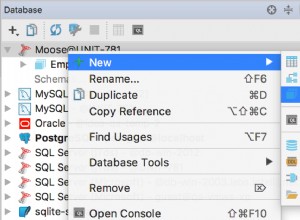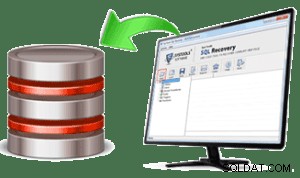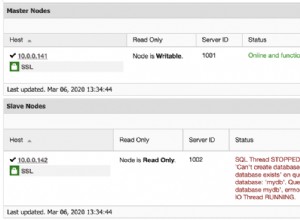Sie haben hier ein bisschen Chaos, weil Sie zwei Tabellen in unterschiedlichen Strukturen haben und mehrere Spalten pivotieren möchten. Ich würde zuerst damit beginnen, eine statische Version Ihrer Abfrage zu schreiben, um die Logik zu korrigieren, und dann den Prozess des Schreibens einer dynamischen Version durchgehen.
Da Sie mehrere Spalten pivotieren möchten, müssen Sie die verschiedenen Spalten in den Controls unpivotieren Tisch zuerst, dann Pivot. Sie haben dies als SQL Server 2008 gekennzeichnet, sodass Sie CROSS APPLY verwenden können um die Spalten zu entpivozieren.
Ich würde vorschlagen, die folgenden Schritte zu unternehmen. Entpivotieren Sie zuerst die controls Tabelle:
select
ProjectId,
col = ControlCode +'_'+col,
val
from
(
select
c.ProjectId,
c.ControlCode,
c.ControlPoint,
c.ControlScore,
c.ControlValue
from controls c
) d
cross apply
(
select 'ControlPoint', cast(controlpoint as varchar(10)) union all
select 'ControlScore', cast(ControlScore as varchar(10)) union all
select 'ControlValue', ControlValue
) c (col, val)
Siehe SQL Fiddle mit Demo . Dies wird Ihre mehreren Zeilen in mehrere Spalten umwandeln, ähnlich wie:
| PROJECTID | COL | VAL |
|-----------|----------------|---------|
| P001 | A_ControlPoint | 30.44 |
| P001 | A_ControlScore | 65.00 |
| P001 | A_ControlValue | Invalid |
| P001 | C_ControlPoint | 45.30 |
| P001 | C_ControlScore | 85.00 |
| P001 | C_ControlValue | Valid |
Zweitens, holen Sie sich die Daten von ControlChilds Tabelle in ein ähnliches Format, aber verwenden Sie Ihre row_number() So weisen Sie jedem Kind eine Sequenz zu:
select
projectId,
col = ControlCode+'_'+'Child'+cast(seq as varchar(10)),
ControlChildValue
from
(
select c.ProjectId,
c.ControlCode,
cc.ControlChildValue,
row_number() over(partition by c.ProjectId, c.ControlCode
order by cc.ControlChildId) seq
from controls c
inner join controlchilds cc
on c.controlid = cc.controlid
) d
Siehe SQL Fiddle mit Demo . Dadurch werden die Daten aus dieser Tabelle im Format:
abgerufen| PROJECTID | COL | CONTROLCHILDVALUE |
|-----------|----------|-------------------|
| P001 | A_Child1 | Yes |
| P001 | A_Child2 | No |
| P001 | A_Child3 | NA |
| P001 | A_Child4 | Others |
| P001 | C_Child1 | Yes |
| P001 | C_Child2 | SomeValue |
Jetzt können Sie ganz einfach UNION ALL verwenden zwischen den beiden Abfragen und wenden Sie die PIVOT-Funktion an:
select ProjectId,
A_ControlPoint, A_ControlScore, A_ControlValue,
A_Child1, A_Child2, A_Child3, A_Child4,
C_ControlPoint, C_ControlScore, C_ControlValue,
C_Child1, C_Child2
from
(
select
ProjectId,
col = ControlCode +'_'+col,
val
from
(
select
c.ProjectId,
c.ControlCode,
c.ControlPoint,
c.ControlScore,
c.ControlValue
from controls c
) d
cross apply
(
select 'ControlPoint', cast(controlpoint as varchar(10)) union all
select 'ControlScore', cast(ControlScore as varchar(10)) union all
select 'ControlValue', ControlValue
) c (col, val)
union all
select
projectId,
col = ControlCode+'_'+'Child'+cast(seq as varchar(10)),
ControlChildValue
from
(
select c.ProjectId,
c.ControlCode,
cc.ControlChildValue,
row_number() over(partition by c.ProjectId, c.ControlCode
order by cc.ControlChildId) seq
from controls c
inner join controlchilds cc
on c.controlid = cc.controlid
) d
) src
pivot
(
max(val)
for col in (A_ControlPoint, A_ControlScore, A_ControlValue,
A_Child1, A_Child2, A_Child3, A_Child4,
C_ControlPoint, C_ControlScore, C_ControlValue,
C_Child1, C_Child2)
) piv;
Siehe SQL Fiddle mit Demo .
Nachdem Sie nun die richtige Logik haben, können Sie diese in eine dynamische SQL-Version konvertieren:
DECLARE @cols AS NVARCHAR(MAX),
@query AS NVARCHAR(MAX)
select @cols = STUFF((SELECT ',' + QUOTENAME(col)
from
(
select ControlCode,
col = ControlCode +'_'+col,
seq,
so
from controls
cross apply
(
select 'ControlPoint', 0, 0 union all
select 'ControlScore', 0, 1 union all
select 'ControlValue', 0, 2
) c (col, seq, so)
union all
select ControlCode,
col = ControlCode+'_'+'Child'+cast(seq as varchar(10)),
seq,
3
from
(
select ControlCode,
row_number() over(partition by c.ProjectId, c.ControlCode
order by cc.ControlChildId) seq
from controls c
inner join controlchilds cc
on c.controlid = cc.controlid
) d
) src
group by ControlCode, seq, col, so
order by ControlCode, so, seq
FOR XML PATH(''), TYPE
).value('.', 'NVARCHAR(MAX)')
,1,1,'')
set @query = 'SELECT ProjectId, ' + @cols + '
from
(
select ProjectId,
col = ControlCode +''_''+col,
val
from
(
select
c.ProjectId,
c.ControlCode,
c.ControlPoint,
c.ControlScore,
c.ControlValue
from controls c
) d
cross apply
(
select ''ControlPoint'', cast(controlpoint as varchar(10)) union all
select ''ControlScore'', cast(ControlScore as varchar(10)) union all
select ''ControlValue'', ControlValue
) c (col, val)
union all
select
projectId,
col = ControlCode+''_Child''+cast(seq as varchar(10)),
ControlChildValue
from
(
select c.ProjectId,
c.ControlCode,
cc.ControlChildValue,
row_number() over(partition by c.ProjectId, c.ControlCode
order by cc.ControlChildId) seq
from controls c
inner join controlchilds cc
on c.controlid = cc.controlid
) d
) x
pivot
(
max(val)
for col in (' + @cols + ')
) p '
exec sp_executesql @query;
Siehe SQL Fiddle mit Demo . Ich habe die dynamische Version geschrieben, um die Spalten in der Reihenfolge zu halten, die Sie in Ihrem Beispiel verwendet haben. Dies kann durch die Verwendung eines Werttyps für die Sortierreihenfolge erfolgen.
Dies ergibt ein Endergebnis von:
| PROJECTID | A_CONTROLPOINT | A_CONTROLSCORE | A_CONTROLVALUE | A_CHILD1 | A_CHILD2 | A_CHILD3 | A_CHILD4 | C_CONTROLPOINT | C_CONTROLSCORE | C_CONTROLVALUE | C_CHILD1 | C_CHILD2 |
|-----------|----------------|----------------|----------------|----------|----------|----------|----------|----------------|----------------|----------------|----------|-----------|
| P001 | 30.44 | 65.00 | Invalid | Yes | No | NA | Others | 45.30 | 85.00 | Valid | Yes | SomeValue |




